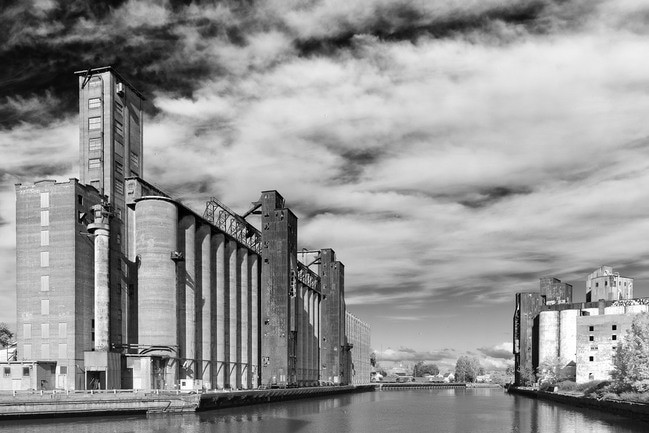The Concrete Atlantis Revisited
The Concrete Atlantis Revisited is a new exhibition conceived by the Museum of Architecture that takes Reyner Banham’s 1986 book as a starting point to examine the influence of industrial architecture on the built environment. Starting from masters of the Modern Movement in the early 20th century – Le Corbusier, Walter Gropius and Erich Mendelsohn – the exhibition traces the role concrete silos have played in the architectural production to the present day. The special focus of the exhibition is a series of photographs taken by Adam Elstein of the grain silos in Buffalo, New York.
Running at MoA’s temporary exhibition space in South Kensington, the exhibition draws together a variety of material, from photography to architectural models, magazines, books and archival imagery.
Tracing what he sees as the “true sources of the International Style”, in “A Concrete Atlantis” Reyner Banham examines the role of the American industrial model for European architects of the early 20th century. Banham suggests that the US was idealised as the “motherland of industry”, where modernity was already a reality, and that European architects sought to design buildings that were “as functionally honest and as structurally economical as any American factory.” “A Concrete Atlantis Revisited” brings this analysis to life through a critical examination of the fascination with industrial architecture made possible through the juxtaposition of past and present work.
The exhibition is structured around three different sections: the opening section puts on display the work of architectural photographer Adam Elstein. Elstein’s photographs depict the grain silos in Buffalo, New York, that have captivated the imagination and incited the theoretical discourse of Modernist architects. The second part of the exhibition traces the influence of silo architecture on Le Corbusier, Erich Mendelsohn and Walter Gropius both through their work and writing. The final section of the exhibition showcases the work of contemporary architecture practices, such as Heatherwick Studio and MVRDV, that re-imagines the silo today.
